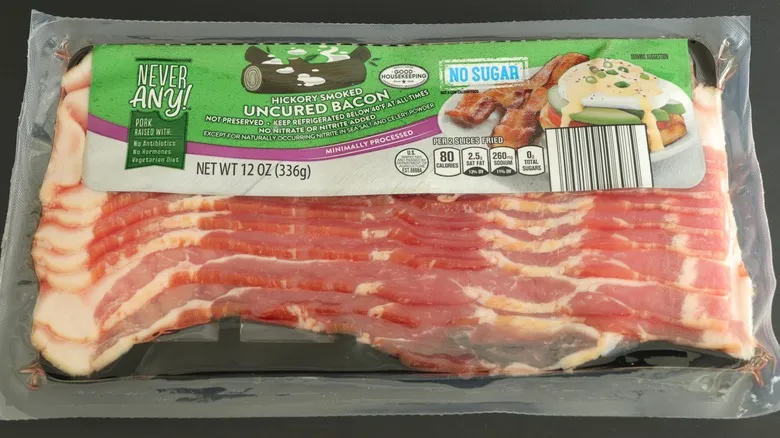What is the bacon curing process?

Historically, when fresh meat was scarce and refrigeration was not widely used, curing served as the primary method of preservation. Today, cured meats have become essential components of many diets. The fundamental curing process involves using salt to draw moisture out of the meat, creating an environment that is unfavorable for bacterial growth. In modern times, most cured meats also incorporate sugar to balance the saltiness and nourish beneficial bacteria, along with nitrites and nitrates to help eliminate harmful bacteria, enhance flavor, and improve the meat's color.
Sodium nitrite is one of the most prevalent preservatives found in cured meats. It interacts with the myoglobin protein in the meat, resulting in a reddish or pink hue that consumers generally find more appealing than brown. Additionally, it helps prevent the growth of the bacteria responsible for botulism. Despite its advantages and widespread use, nitrite is a highly controversial food additive, as its presence in meats has been associated with cancer. In 2015, the World Health Organization classified processed meats as a Group 1 carcinogen, indicating that there is consistent evidence linking them to certain diseases, particularly colorectal cancer.
While bacon can be sourced from various parts of the pig depending on regional preferences, it is always produced through salt-curing. There are two primary methods for this process: dry and wet curing. Dry curing involves rubbing the pork with curing salt, whereas wet curing entails injecting it with a brine solution. Most commercial bacon production today utilizes the wet curing method, including "uncured bacon," which replaces synthetic sodium nitrite with naturally occurring alternatives like celery powder.
Is uncured bacon better for you?

While uncured bacon is marketed as healthier due to its lack of artificial chemicals, there is limited scientific evidence to support this notion. Although it may contain naturally derived nitrites instead of synthetic ones, research indicates that the health effects of nitrites and nitrates in processed meats are similar, regardless of their origin. Interestingly, there are no health risks linked to the nitrites found in natural sources like celery. This is because the risk arises from the interaction between nitrites and proteins, which are abundant in meats like pork but scarce in vegetables. This interaction can lead to the formation of carcinogenic nitrosamines, whether during cooking or digestion.
The USDA notes that cured meats cooked at high temperatures are particularly prone to producing nitrosamines, which poses a concern for bacon. While the combination of nitrites and amines is problematic, vitamins C and E have been shown to help lower nitrosamine levels. Consequently, the USDA now mandates the addition of 550 ppm of either sodium ascorbate or sodium erythorbate to pumped bacon. Given the known carcinogenic properties of bacon and the presence of nitrites even in the so-called uncured varieties, it’s wise to be cautious about your consumption. So, the next time you come across a package of bacon labeled "uncured" at the store, remember that its health benefits may be overstated.
Recommended

Yes, Cheese Sweats Are A Thing — Here's Why It Happens

What To Do With The Cream In Canned Coconut Milk

Are Pimentos And Roasted Red Peppers The Same Thing?

Butter Vs Oil: Which Is Better For Searing Tuna Steaks?
Next up

